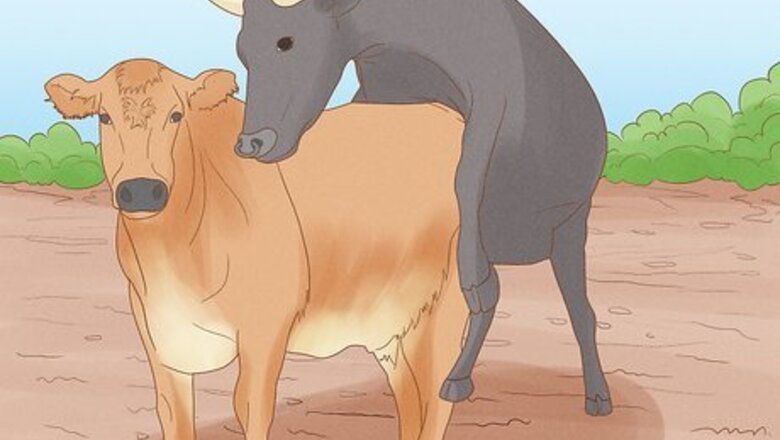
views

Watch for estrus activity. If a cow is not coming back into heat after approximately 21 days, nor is showing any signs heat activity any time between day 21 to day 45 post-breeding (or even an estimated breeding date if you weren't there to see it happen), then it's likely that she has been successfully settled. A bred cow may display false heats on occasion, but should not be an indication that she has come back into regular cycling again, particularly if such false heats occur only once or twice after breeding then not again afterwards. However, it is possible that such activity may have not been false, because it's not uncommon for a cow to absorb the embryo or even abort it thus allowing her system to resume regular cycling until the next time she mates with a bull. False heats are notably rare, and so can be easily mistaken for real, genuine estrus activity.
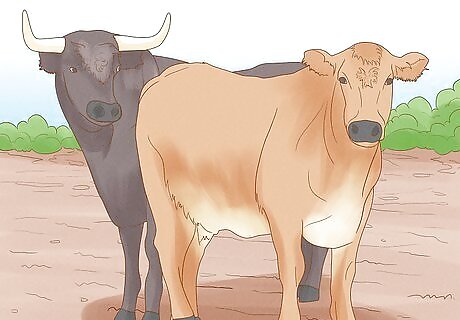
Study the behaviour of the bull. If the bull is not paying any attention to a cow that has since gone out of estrus, and continues to not pay any attention to her when you suspect she should be coming into heat about 18 to 24 days later, then it's very likely that that cow has been bred. It's typical for a bull to not pay attention to a cow in between heat periods. This is because she is not receptive to breeding due to her hormonal levels. You'll know that she's going to come into heat when the bull starts paying her more attention.
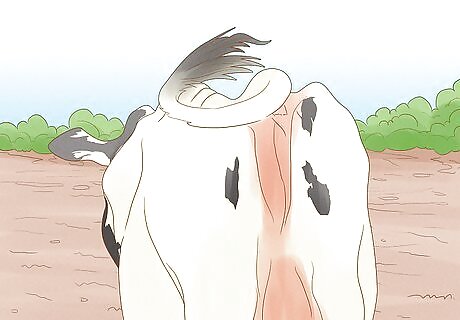
Look for the crooked tail. This is probably the one of the best ways to tell if a cow has been bred: A crooked tail, or a tail that is held out in an odd angle than normal, will be displayed by the cow or heifer for about 24 to 48 hours after being serviced by the bull. It is one of the best ways because you can determine almost the day that a cow has been serviced. If you're one or two days off, that is not a problem. It's far better than being a complete month off!
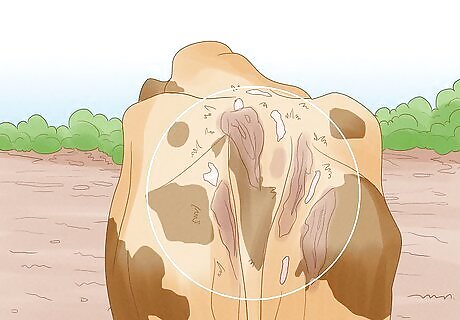
Look for raised hair, mud or bare patches over the female's hindquarters. Also an indication of mating and estrus activity, it is another useful way to see if a cow has been serviced or not. These characteristics should be used to note breeding activity, but only if there is a breeding bull with the females. The raised patches only indicate that a cow or heifer is in heat if a) there are only females in the herd, and/or b) there's a non-breeding bull (or a "gomer" bull) used on the cow herd for heat detection only for the purpose of artificial insemination.

Look for discharge from the vulva. A female that has recently been bred by the herd bull--often within an hour or so--will usually have whitish discharge come from her vulva. This would be seminal fluid from the bull, as often not all the semen that is ejaculated into the cow or heifer makes it through the cervix into the uterus; almost half of it is excreted back out again.
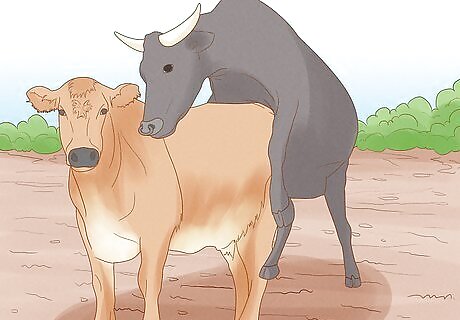
The mating couple. The most obvious indicator that a cow has been bred if you just caught the sight of your bull riding and ejaculating into one of your cows. The whole event, as it can be called, only takes a matter of a few seconds, so if you're able to see it, then consider yourself lucky. Usually a bull will mate with a cow once, but it's not uncommon if it's done several times, especially if she has garnered the attention of more than one.



















Comments
0 comment